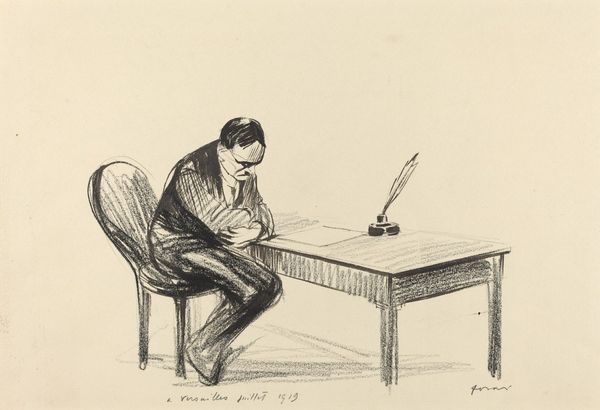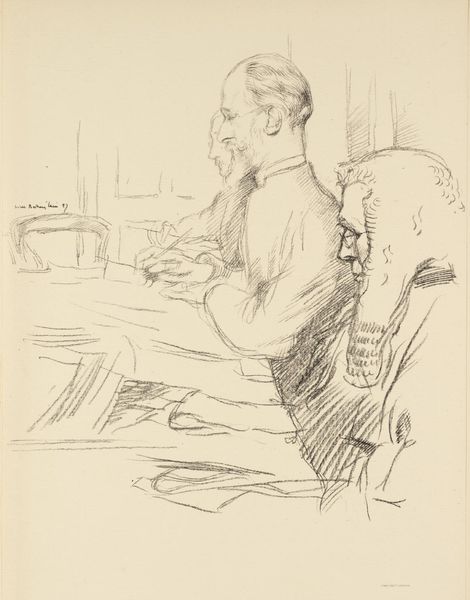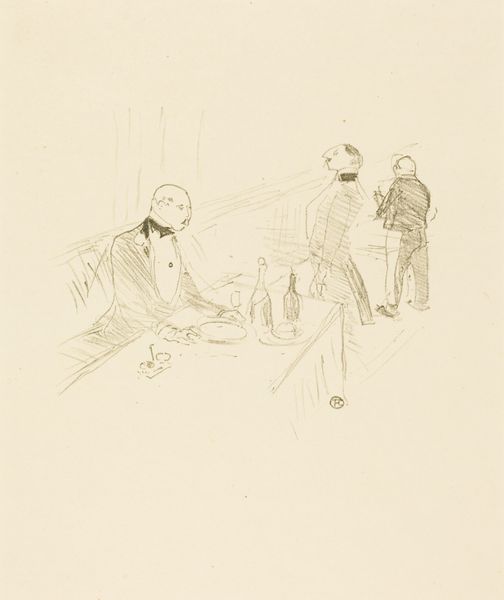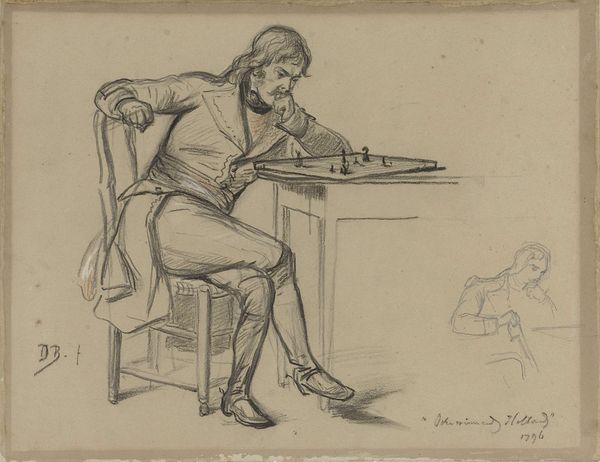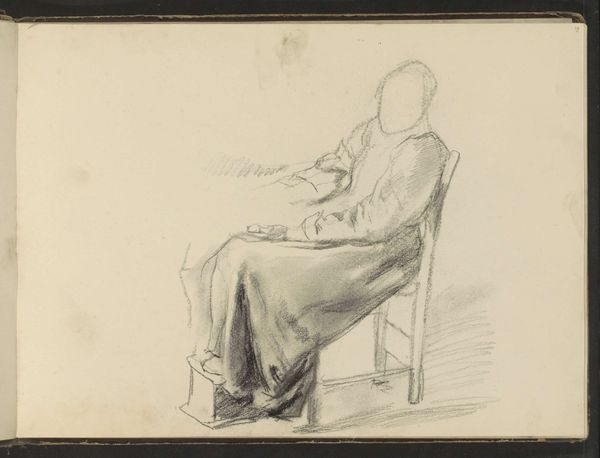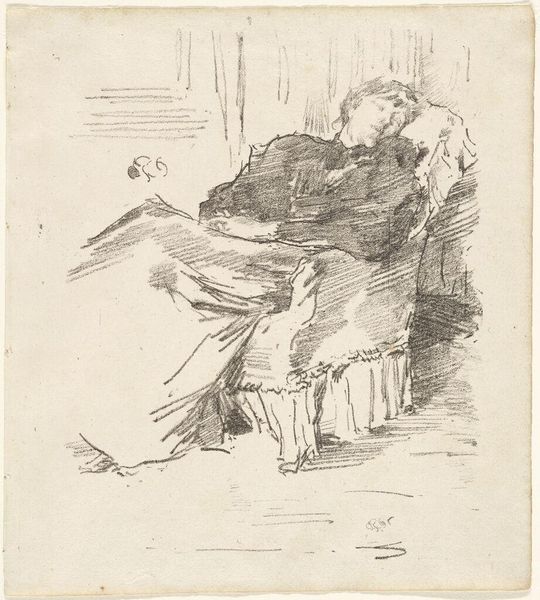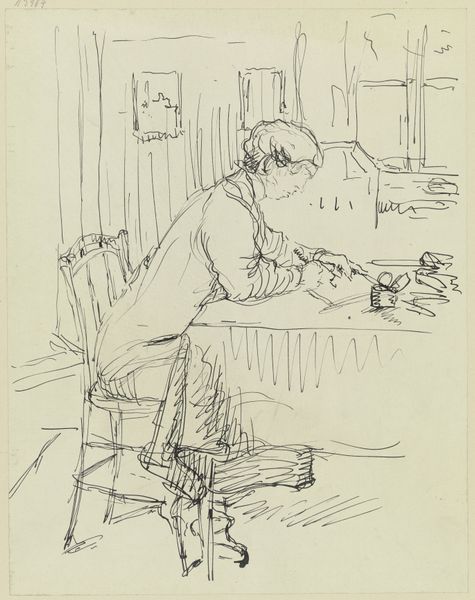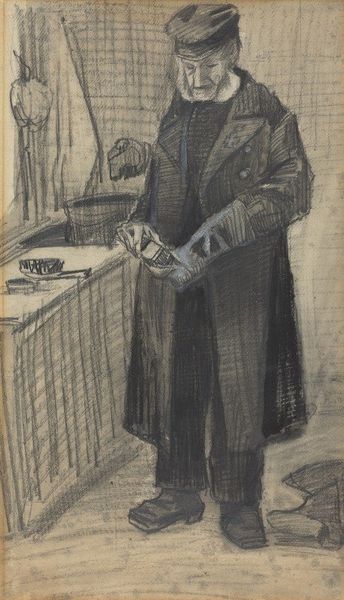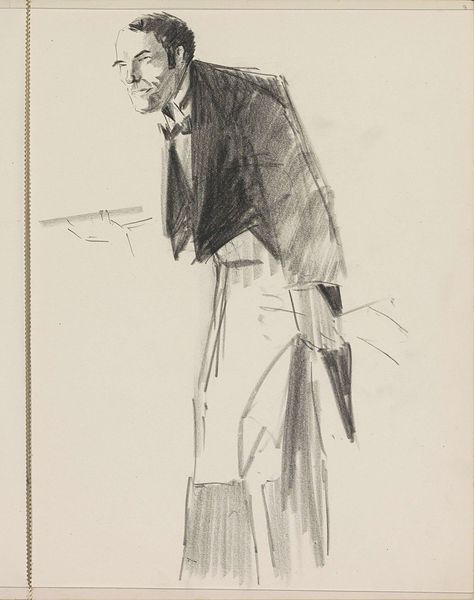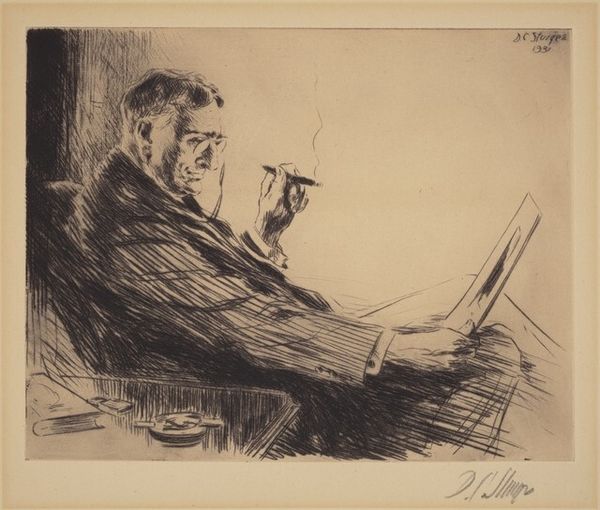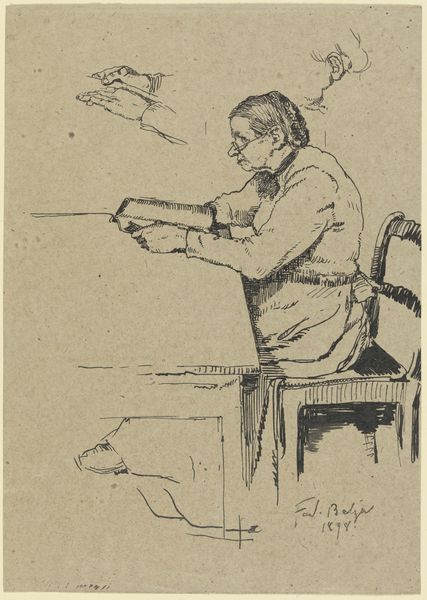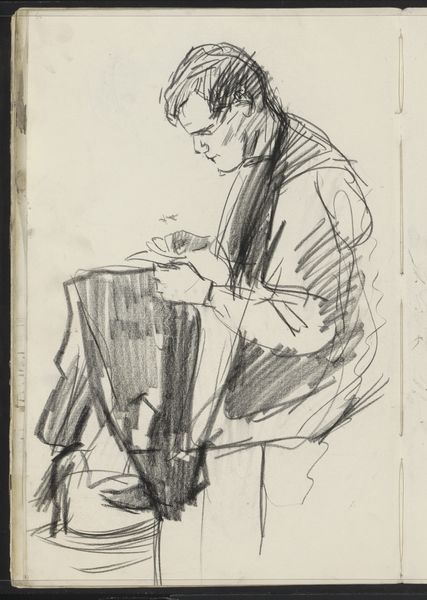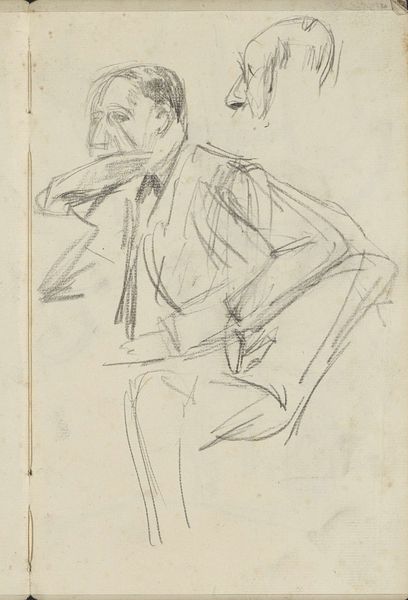
Copyright: Public Domain: Artvee
Editor: Here we have "At Versailles, July 1919," a pen, ink and watercolor drawing by Jean-Louis Forain. The figure seems burdened, almost collapsing under some unseen weight. What story do you think Forain is trying to tell here? Curator: This drawing, created in the immediate aftermath of World War I, exists in a moment pregnant with complex historical and social anxieties. We see a lone figure, presumably a statesman involved in the Treaty of Versailles. He's hunched, yes, but what does that posture *mean* in the context of a treaty meant to secure peace? Editor: Perhaps the weight of responsibility, the implications of the treaty... Curator: Exactly! And think about the very *site* of Versailles. What does Versailles signify historically? Opulence, aristocracy, and ultimately, revolution. Forain, known for his social commentary, isn’t merely depicting a man; he's framing the complexities of power, class, and the burdens of history. This seemingly simple drawing operates as a critique. Do you think the rapid lines suggest a feeling of instability? Editor: Absolutely, the quick strokes make it feel more like a fleeting, anxious moment, rather than a posed portrait. Curator: Precisely! The sketch-like quality underscores the instability of the moment, a world on the precipice of something new, but still deeply entrenched in old power structures. The composition reinforces this too - the man is off to the left, with much of the page to the right left empty. The future, perhaps, yet unwritten? Editor: That's a compelling interpretation. It's amazing how much historical context can change your understanding of a seemingly simple image. Curator: Indeed. Art often functions as a mirror, reflecting the anxieties and aspirations of its time.
Comments
No comments
Be the first to comment and join the conversation on the ultimate creative platform.
